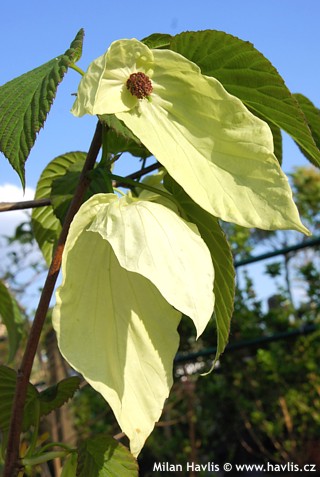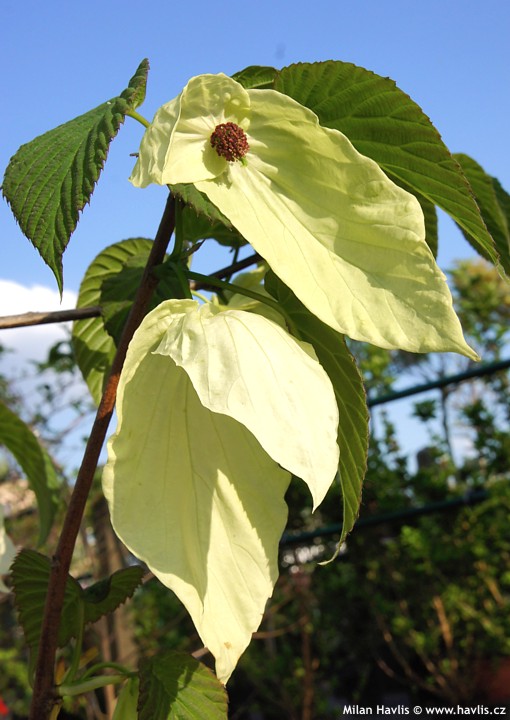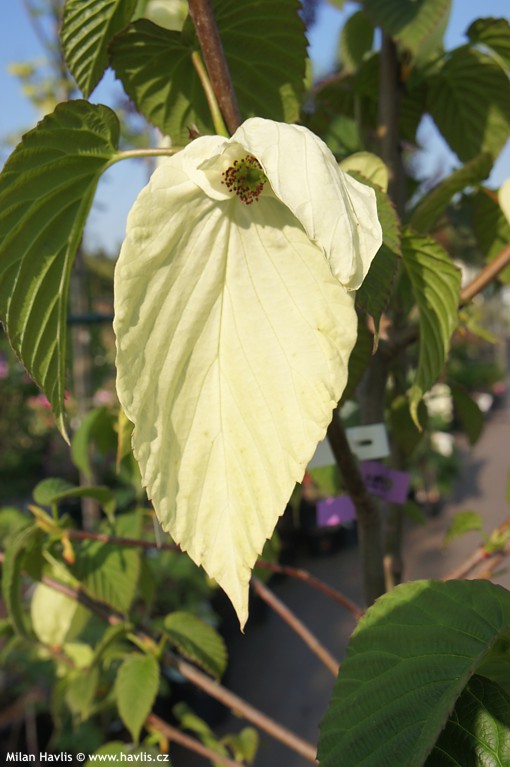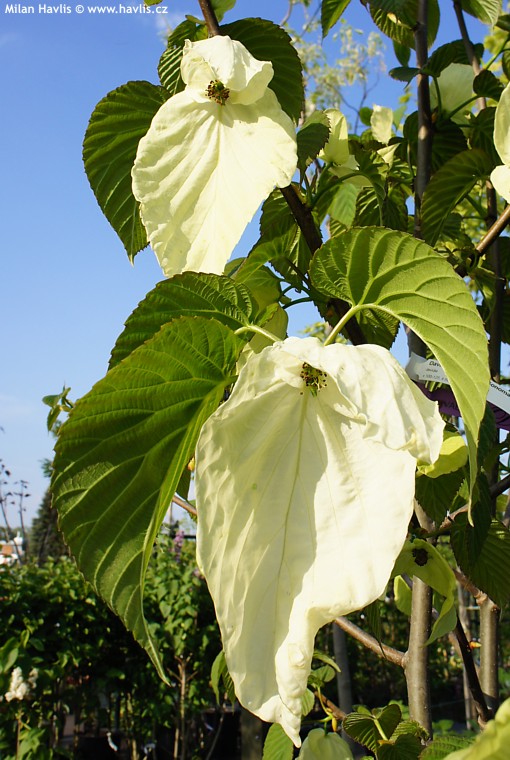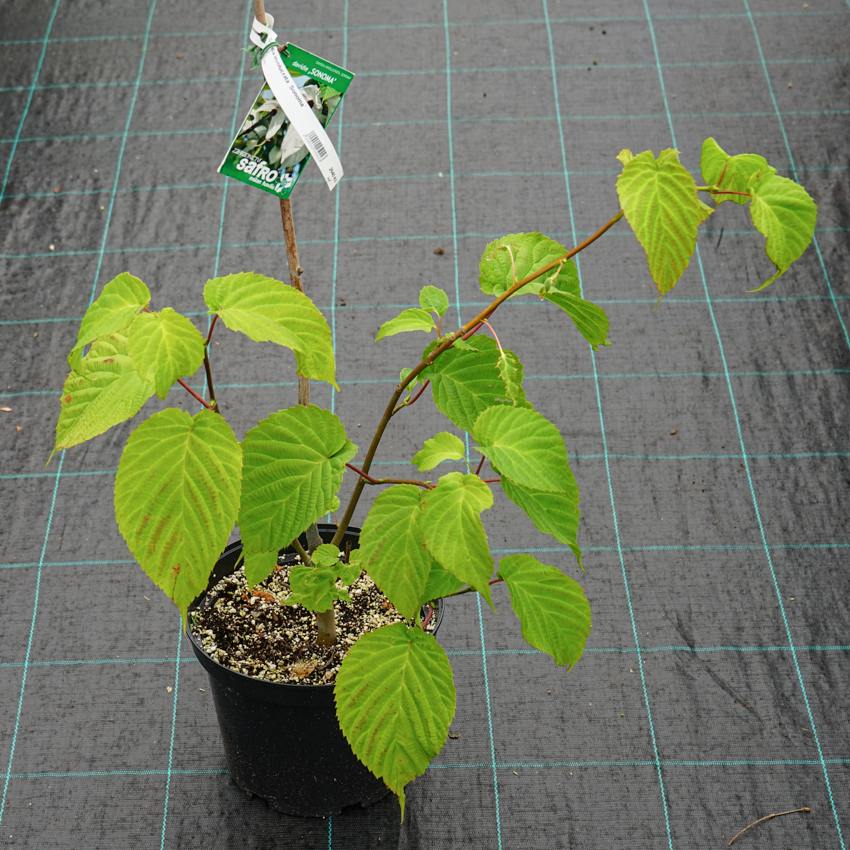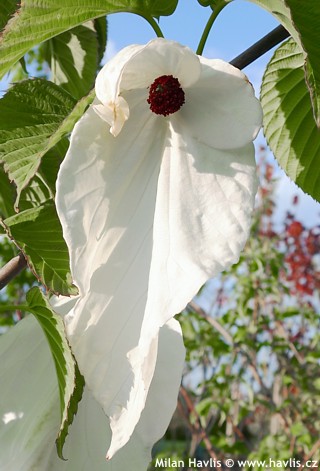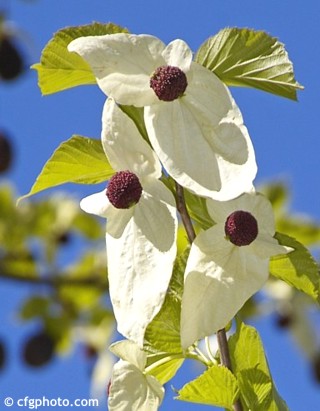Davidia involucrata (S.H.N.) 'SONOMA' dove tree


Davidia
Dove tree is an elegant and rather exotic looking tree that is still rare in cultivation in Europe. It was believed to have been extinct after the glacial era, however, in late 19th century some specimens were found in Sichuan, China. Dove tree was brought to Britain in 1903 and cultivated as a rarity in large gardens and arboretums of the tempered climate. The species needs to be quite old to commence blooming, therefore, breeders are doing their best to come up with newer varieties that will bloom at earlier age.
Sonoma dove tree is a sensation that has been a subject of excited debates and positive comments on horticultural forums for some time now. It is a variety that arose from grafts taken from Sonoma Heritage Tree No.20 at Sonoma Horticultural Nursery. This tree was about 60 years old at the turn of the millennium and produces plants that bloom at very young age. Many enthusiasts on their internet blogs show pictures of their young plants that bloom 2 or 3 years after grafting! That is truly a fantastic achievement which has its second face – its high price, as every novelty.
Sonoma dove tree produces attractive inflorescence, composed of tiny green flowers with burgundy red anthers, surrounded by its main attraction = large, white bracts owing to which this plant is also called handkerchief tree. The leaves are deciduous, dark green, ovate to heart-shaped, and serrated at margins.
Being a new variety the ultimate height has not been observed yet, but is expected about 8m in Central-European conditions. Dove tree needs well-drained but constantly moist soil, rich in humus and preferably deep. Do not grow it in windy areas. It is fully hardy to -24°C and older plants can withstand temporary swings to -27°C (USDA zone 5b) in protected locations.
Last update 07-12-2013
Goods are shipped all over Europe. For Russia and U.K. and for further details please read about SHIPPING OPTIONS HERE.
Are you interested in a serious discount for orders NOV-FEB? Check your options here.
THE PRICES INCLUDE VAT of 15%. For quick conversion you can use 1 CZK = approx. 0.04 EUR
- STANDARD QUALITY - Plants of this group are 1st class quality with number of branches and overall density adequate to their size and age, considering they were container grown.
- DE LUXE QUALITY - This label guarantees a luxurious quality of manually selected plants that, compared to their height and age, are exceptionally dense and beautiful.
- EXTRA - These plants are usually mature and bigger specimens with exceptional overall appearance.
- STANDARD (as described in the plant form) means a tree with a trunk of 190-210 cm and a crown at the top, unless specified differently. The commercial size for trees is their girth measured in the height of 1m from ground.
- HOBBY - These plants are of the same quality as our standard-quality plants but younger and therefore cheaper.
- SHRUB - a woody plant with branches growing bushy from the ground level.
- HALF-STANDARD or MINI-STANDARD - a small tree with shorter trunk, its size is usually specified.
- FEATHERED - These are trees with branches growing already from the base of the trunk and up along the stem.
- GRASSES and PERENNIALS - Sizes given usually read the diameter of the pot or the clump, as specified.

































